Conflict Zones
Operation Sindoor: What’s the significance of India’s Pakistan targets? | India-Pakistan Tensions News

The Indian military launched multiple missile attacks targeting sites in Pakistan and Pakistan-administered Kashmir early on Wednesday in an attack it called Operation Sindoor. The Pakistani military claims to have retaliated, shooting down multiple Indian military planes.
At least 26 Pakistanis have been killed in the six targeted cities, according to Lieutenant Ahmed Sharif Chaudhry, the director general of the Inter-Services Public Relations (ISPR) media wing of Pakistan’s military. India says it struck nine sites.
But what’s the significance of the cities and sites that India attacked? And what are India and Pakistan saying about those strikes? And why did India launch these attacks in the first place?
Why did India strike Pakistan?
The missiles were India’s response to the deadly April 22 attack on tourists in Indian-administered Kashmir in Pahalgam, during which 26 men were killed.
An armed group called The Resistance Front (TRF), which demands independence for Kashmir, claimed responsibility for the Pahalgam attack. India claims that the TRF is an offshoot of Pakistan-based armed group, the Lashkar-e-Taiba (LeT). Islamabad has denied its involvement in the Pahalgam attack and has asked for a neutral investigation into the incident.
However, since the attack, India has suspended its participation in the Indus Waters Treaty that Pakistan relies on for its water supply. Pakistan has responded by threatening to suspend its participation in the Simla Agreement, a pact signed in 1972 following the Indo-Pakistan War. Both countries have also scaled back their diplomatic ties, and each has expelled the other’s citizens.
How has India justified the attacks?
India claims it hit “terrorist infrastructure”, targeting organisations including the LeT and Jaish-e-Muhammad (JeM), an armed group based in Pakistan which claimed responsibility for a suicide bombing in February 2019, which killed 40 Indian paramilitary soldiers in Pulwama in Indian-administered Kashmir.
In a briefing on Wednesday, Indian Foreign Secretary Vikram Misri insisted that the missile strikes “focused on dismantling the terrorist infrastructure and disabling terrorists likely to be sent across to India”.
Joining Misri in the briefing, Indian military officials Colonel Sofiya Qureshi and Wing Commander Vyomika Singh detailed the operation. Five of the nine sites that India hit, they said, were in Pakistan-administered Kashmir. The remaining four were in Punjab – in Bahawalpur, Muridke, Shakar Garh and a village near Sialkot.
During the briefing, the Indian military showed a map marking out what it claimed were 21 “terrorist camps” in Pakistan and Pakistan-administered Kashmir. Al Jazeera has not been able to independently verify the claims of either the Indian or Pakistani militaries.

What has Pakistan said about the sites attacked?
Chaudhry of the ISPR described the Indian strikes as an “unprovoked attack, targeting innocent people”. He indicated that India had launched a total of 24 strikes across six locations in Pakistan and Pakistan-administered Kashmir.
Chaudhry said at least 26 civilians, including women and children, had been killed, and at least 46 people were injured. He claimed mosques and residential areas were targeted, killing and injuring civilians.

What’s the significance of the sites targeted by India?
The Indian missile strikes represent the most extensive attacks on Pakistani soil outside the four wars that the nuclear-armed neighbours have fought. They also mark the first time since the war of 1971 that India has attacked Punjab, Pakistan’s most populated province and historical and economic hub.
Unlike previous aerial attacks by India in Pakistan or in Pakistan-administered Kashmir, some of these strikes targeted large population centres. Muridke is next to Lahore, Pakistan’s second-most populous city. Sialkot and Bahawalpur are major cities, too.
But many of the sites chosen as targets by India also hold specific strategic importance, at least from New Delhi’s perspective. Here’s a breakdown:
Muridke, Punjab
Muridke is a city in Punjab’s Sheikhupura District, peppered with totems of historical memory from the Mughal, Mauryan and Gupta eras.
Chaudhry said a mosque named Masjid Ummul Qura was targeted with four strikes. One man was killed and one man was injured as a result. Two people have been missing from this location, Chaudhry said, adding that surrounding residential quarters have also been damaged in these attacks.
But the town, according to India and much of the international community, also hosts the headquarters of the Jamat-ud-Dawa, a charity organisation that New Delhi insists is a front for the LeT.
On Wednesday, India’s Qureshi claimed that Indian missiles struck the LeT’s Markaz Taiba camp in Muridke. The Indian army claimed that key perpetrators of the 2008 Mumbai attack – including Ajmal Kasab, the sole gunman who was captured alive after that assault on India’s financial capital – were trained at that camp.
Meanwhile, images emerging from Muridke showed rescuers searching for victims amid the debris of a damaged government health and education complex.
Bahawalpur, Punjab
Chaudhry said that four Indian missiles struck Ahmedpur Sharqia, a town near Bahawalpur, targeting a mosque named Masjid Subhan, which was destroyed in the attack. He said that at least five people were killed in the attack, including two men, two women, and a three-year-old girl. Additionally, he said, 31 people were injured – 25 men and six women. He added that four “residential quarters”, where civilian families were living, were damaged.
But Qureshi said India had hit the headquarters of the JeM, called Markaz Subhanallah. India described the site as a hub for “recruitment, training and indoctrination”.
Muzaffarabad, Pakistan-administered Kashmir
Muzaffarabad is the capital city of Pakistan-administered Kashmir, located at the confluence of the Jhelum and Neelum rivers. Muzaffarabad is sustained by its cottage industry ecosystem, including furniture making, wood carving, garment making and embroidery work, according to the State Bank of Pakistan.
Chaudhry said that a mosque called Masjid e Bilal was hit in Muzaffarabad, and a “young girl was injured”.
But Qureshi said India hit a LeT training centre, Sawai Nala camp in Muzaffarabad, 30km (19 miles) away from the Line of Control (LoC), the de facto border that separates Indian-administered and Pakistan-administered Kashmir. She claimed that those responsible for multiple attacks, including the April 22 Pahalgam killings, were trained at this camp.
The Indian military officials also said they attacked a Jaish-e-Muhammad “staging area”, the Syedna Bilal camp in Muzaffarabad. A staging area refers to a place where people, vehicles and equipment are assembled and readied before being assigned a mission.
Kotli, Pakistan-administered Kashmir
Kotli is a city along the Poonch river and is an agricultural and tourist hub.
Chaudhry said a mosque named Masjid Abbas was targeted in Kotli. A 16-year-old girl and an 18-year-old boy were killed. At least two other people were injured, he added.
Qureshi, however, said that India hit a LeT base, Gulpur camp, about 30km (19 miles) away from the LoC. The Indian army added that it also struck what it called the Abbas camp in Kotli, 13km (8 miles) away from the LoC, where Qureshi said up to 15 “terrorists” could be trained at a time.
Qureshi said India has also hit Mehmoona Joya, which she described as a facility of the Hizbul Mujahideen (HuM), a rebel group based in Indian-administered Kashmir. The HuM was founded by separatist leader Muhammad Ahsan Dar in September 1989, with a pro-Pakistan ideology, calling for India to leave the parts of Kashmir that it administers.
Bhimber, Pakistan-administered Kashmir
Qureshi claimed India struck what India called the Barnala camp in Bhimber, about 9km (5.6 miles) away from the LoC. She claimed that fighters were trained in using weapons, improvised explosive devices (IEDs) and in jungle survival at this camp.
Pakistani officials had not mentioned Bhimber as the site of any of the Indian attacks by late Wednesday evening. However, Bhimber is just south of Kotli, so it is unclear whether a missile strike on Bhimber is being counted by Pakistan as among the attacks on Kotli.
Sialkot, Punjab
Sialkot is one of Pakistan’s most important industrial centres for the manufacture of surgical items, sporting goods and leather products.
Chaudhry said that a village north of Sialkot called Kotli Loharan was targeted in two strikes. One of these strikes misfired and did not explode, while the other landed in an open field, resulting in no damage, Chaudhry said.
India’s Qureshi and Singh, however, claimed that India had struck what they called the Sarjal camp in Sialkot. They claimed this was the training centre for those responsible for the killing of four police officers in March this year in Indian-administered Kashmir.
Shakar Garh, Punjab
Chaudhry said Shakar Garh was targeted with two strikes and reported “minor damage” to a “small hospital, a dispensary”.
However, Indian military officials have not mentioned Shakar Garh among the places targeted in the May 7 strikes.
Conflict Zones
Have India and Pakistan started a drone war? | Drone Strikes News
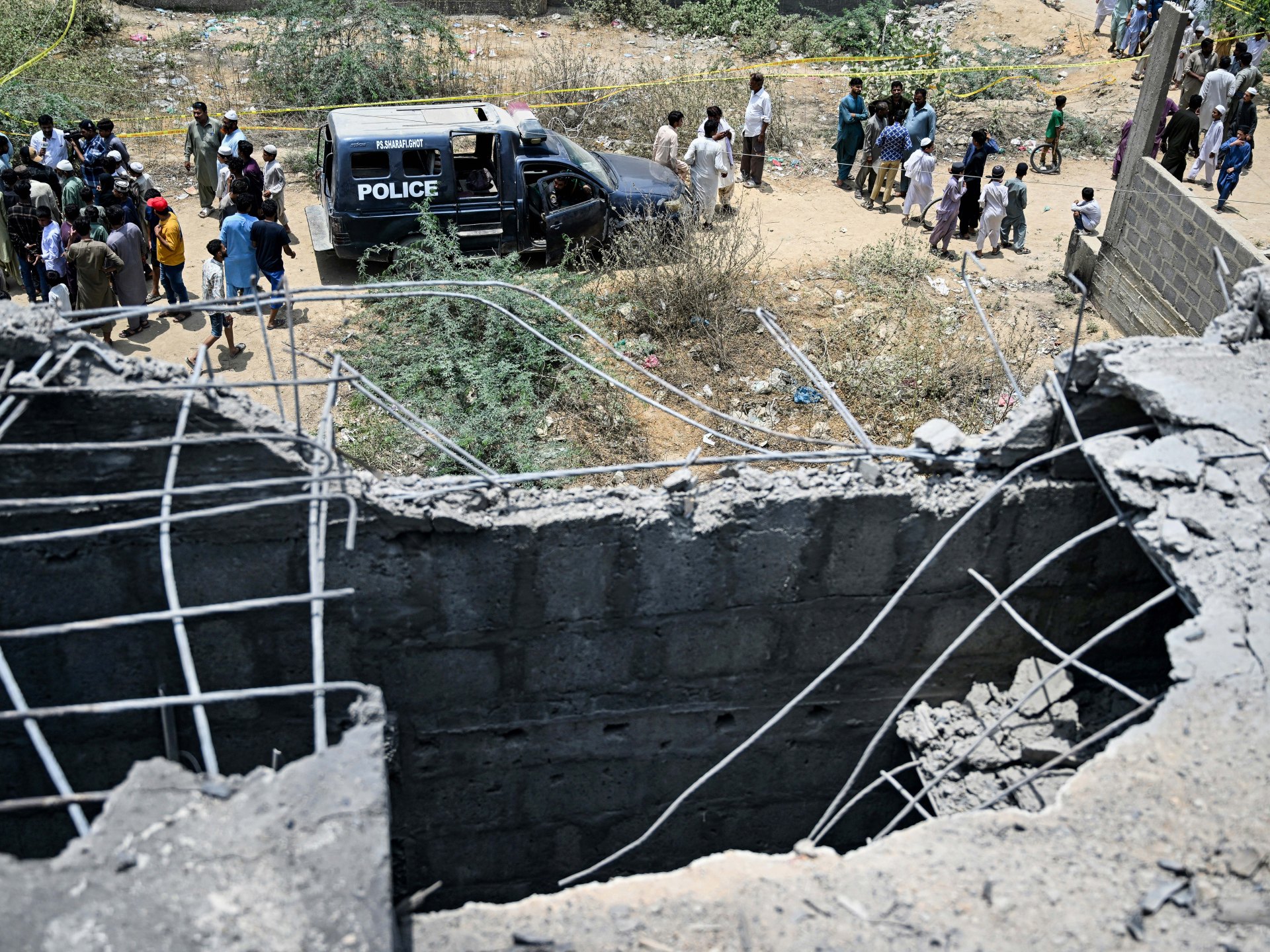
Pakistan’s military said on Thursday morning that the country’s air defence system had brought down 25 Indian drones overnight over some of the country’s chief cities, including Lahore and Karachi. At least one civilian has died, and five people were wounded, it said.
India’s Defence Ministry confirmed hours later that it had targeted Pakistan’s air defence radars and claimed that it was able to “neutralize” one defence system in Lahore. It said Pakistan had attempted to attack India and Indian-administered Kashmir with drones and missiles overnight, but that these had been shot down.
The drone attacks represent the latest escalation between the nuclear-armed neighbours, a day after India launched deadly missile strikes on Pakistan and Pakistan-administered Kashmir, killing at least 31 people, according to Islamabad. Those were the most extensive Indian strikes ever on Pakistan outside the four wars that they have fought. Heavy artillery shelling from both sides overnight caused border communities in the disputed Kashmir region to flee.
Simmering tensions erupted on April 22 after gunmen killed 25 tourists and a local pony rider in Pahalgam in Indian-administered Kashmir. India blamed Pakistan for backing fighters who claimed the attack. Islamabad has denied any involvement.
Here’s what we know about the latest escalation of drone attacks:
What happened?
In a briefing on Thursday, Pakistani army spokesman Lieutenant General Ahmad Sharif Chaudhry said the country came under attack from a wave of drones overnight, targeting many of the most populated cities, including Karachi and Lahore.
Pakistan’s air defence system intercepted and brought down these drones, he said. Pakistan’s military said 25 such drones were jammed and shot out of the sky.
The falling debris killed one civilian and injured another person in the southern Sindh province, while an additional drone targeted and wounded four soldiers in a military installation in Lahore, Chaudhry said in the news briefing. Partial damage to “military equipment” was recorded in that latter incident.
Chaudhry described the drone attacks as an act of “naked aggression” and a “serious provocation”, and pledged that Pakistan was ready to retaliate.
“It appears that India has apparently lost the plot and, rather than going on a path of rationality, is further escalating in a highly charged environment. Pakistan Armed Forces remain fully vigilant to any type of threat,” he said.

What has India said?
Hours after the drone attacks, India accepted responsibility – but insisted it had been provoked.
On the night of May 7-8, India’s Ministry of Defence said, Pakistani forces attempted to “engage a number of military targets” in multiple areas in northern and western India and Indian-administered Kashmir using “drones and missiles”. These were shot down by India’s air defence systems, the ministry said.
“Today morning Indian Armed Forces targeted Air Defence Radars and systems at a number of locations in Pakistan. Indian response has been in the same domain with same intensity as Pakistan,” the ministry’s statement said. “It has been reliably learnt that an Air Defence system at Lahore has been neutralised.”
Pakistan has not commented on Indian claims that it attempted to strike India with drones and missiles.

Where were the drones in Pakistan brought down?
In his briefing, Pakistan army spokesperson Chaudhry said drones either attacked or were shot down in the following locations:
Lahore: The capital of the eastern Punjab region, and Pakistan’s second-largest city of 14 million people. Local police official Mohammad Rizwan told reporters a drone was downed near Walton Airport, an airfield that the Pakistani military manages and uses for radars. The airport also has training schools.
Gujranwala: The fourth-largest city in Punjab, with a population of 2.5 million people.
Chakwal: Also in the Punjab region, with a population of about 1.5 million.
Rawalpindi: The city in Punjab is home to the headquarters of Pakistan’s powerful military. The city has a population of close to 6 million people.
Attock: Close to the capital, Islamabad, Attock is a cantonment city with a population of 2.1 million.
Nankana Sahib: The Punjab city has a population of just more than 100,000 but enjoys far greater significance than that number suggests: It was the birthplace of Guru Nanak, the founder of Sikhism, and is one of the holiest sites of the faith.
Bahawalpur: Also in Punjab, it has a population of nearly one million.
Miano: A town in Sindh province, housing a major oil field.
Chor: A small town in the Umerkot district of the southeastern province of Sindh.
Ghotki: A city in northern Sindh known for its date palms, with a population of about 120,000.
Karachi: Pakistan’s most populous city of 20 million people is based in Sindh.
Which cities did India claim Pakistan was targeting?
India said Pakistani missiles and drones attempted to strike 15 cities and towns but that all were brought down.
Awantipora: A town of 12,000 people, on the Jhelum River in Indian-administered Kashmir.
Srinagar: The biggest city in the Kashmir valley, Srinagar has a population of 1.2 million people.
Jammu: The winter capital of Indian-administered Kashmir, it has a population of 500,000 people.
Pathankot: Also in Indian-administered Kashmir, Pathankot is a major nerve centre of the Indian army’s operations. It is home to the largest military base in Asia.
Amritsar: The city in India’s Punjab state has a population of 1.1 million and is home to the Golden Temple, one of Sikhism’s holiest shrines.
Kapurthala: A smaller town of 100,000 people in Indian Punjab.
Jalandhar: Right next to Kapurthala, Jalandhar has a population of nearly 900,000.
Ludhiana: The most populous city in Indian Punjab is home to 1.6 million people.
Adampur: The Punjab town is tiny, with just 20,000 people. But it is home to India’s second-largest air force base.
Bhatinda: The city in Indian Punjab has a population of nearly 300,000.
Chandigarh: The capital of both Indian Punjab and the neighbouring state of Haryana, Chandigarh has a population of just more than one million.
Nal: A tiny town near the India-Pakistan border in the desert state of Rajasthan, it is home to a civilian airport and an air force base.
Phalodi: A city of 66,000 people in Rajasthan, Phalodi is famous for its salt industry.
Uttarlai: A small village in Rajasthan that is home to an air force station.
Bhuj: A city of 190,000 people, Bhuj is in Gujarat, the western state of Indian Prime Minister Narendra Modi.
What drones were used in the attack on Pakistan?
Chaudhry, the Pakistani military spokesperson, identified the Indian projectiles as Harop drones.
Harop drones are a form of what are known as loitering munitions, and are developed by the Israeli government’s primary aviation manufacturer and supplier, Israel Aerospace Industries (IAI).
Loitering munitions are usually remotely controlled unmanned air vehicles (UAVs) designed to hover in the air after being deployed, waiting for a precise target to be exposed before they crash into it and self-detonate.
They are not meant to survive a confrontation, and so are also known as suicide drones or kamikaze drones.
The IAI Harop is reputed to be one of the deadliest drones because it combines ordinary UAV and missile capabilities. Spanning two metres (6.6ft) in length, the vehicle is small enough to bypass most aircraft detection systems. It can fly over a range of 200km (120 miles) and is programmed for about six hours of flight. The drone can return and land at its launch base if it fails to engage a target.
The Indian Armed Force (IAF) is one of Israel’s biggest clients for drones. Between 2009 and 2019, India bought at least 25 Harop drones, with a single sale of 10 units costing $100m, according to reporting by The Jerusalem Post.
India’s fleet also includes Searcher and Heron drones, similarly manufactured by the IAI. Searchers are typically used for reconnaissance missions, while the Heron has similar missile capabilities to the Harop.
Why are the drone attacks on Pakistan significant?
Multiple drones breaching Pakistan’s airspace, hovering in the country’s most populous regions, and managing to attack a military location imply that India has the capabilities to breach Pakistan’s air defence and strike its most crucial nerve centres.
The attacks, according to the Pakistani army, were an “extreme act of provocation” that could lead to a major escalation of violence between the two nuclear powers.
Additionally, the drone breach poses a potential threat to civil aviation safety in Pakistan.
The country’s civil aviation authorities temporarily suspended operations in four airports on Thursday, before lifting the restrictions: Allama Iqbal International Airport in Lahore, Jinnah International Airport in Karachi, Islamabad International Airport, and Sialkot International Airport.
What’s the wider context?
Kashmir, famed for its picturesque lakes, meadows and snow-capped mountains, is at the heart of tensions between the two countries.
India and Pakistan both administer parts of it, as does China. But India claims all of it, and Pakistan claims Indian-administered Kashmir, too. Three of the four previous India-Pakistan wars have been over Kashmir, which spans 22,200 sq km (8,570 square miles).
India has for years blamed Pakistan for supporting, arming, and training armed groups seeking secession from India. Pakistan has insisted it provides only moral and diplomatic support to Kashmir’s separatist movement.
New Delhi blamed April’s attack on an obscure group, The Resistance Front (TRF), and claimed it was Pakistan-backed. Islamabad, however, has denounced the attacks and denied involvement, calling for a “transparent, credible, impartial” investigation into the incident.
Both countries, with a combined population of 1.6 billion, are nuclear powers, raising fears among security experts that further escalation could be disastrous.
Conflict Zones
‘No deterrent value’: Will India’s strikes on Pakistan stop armed attacks? | India-Pakistan Tensions News
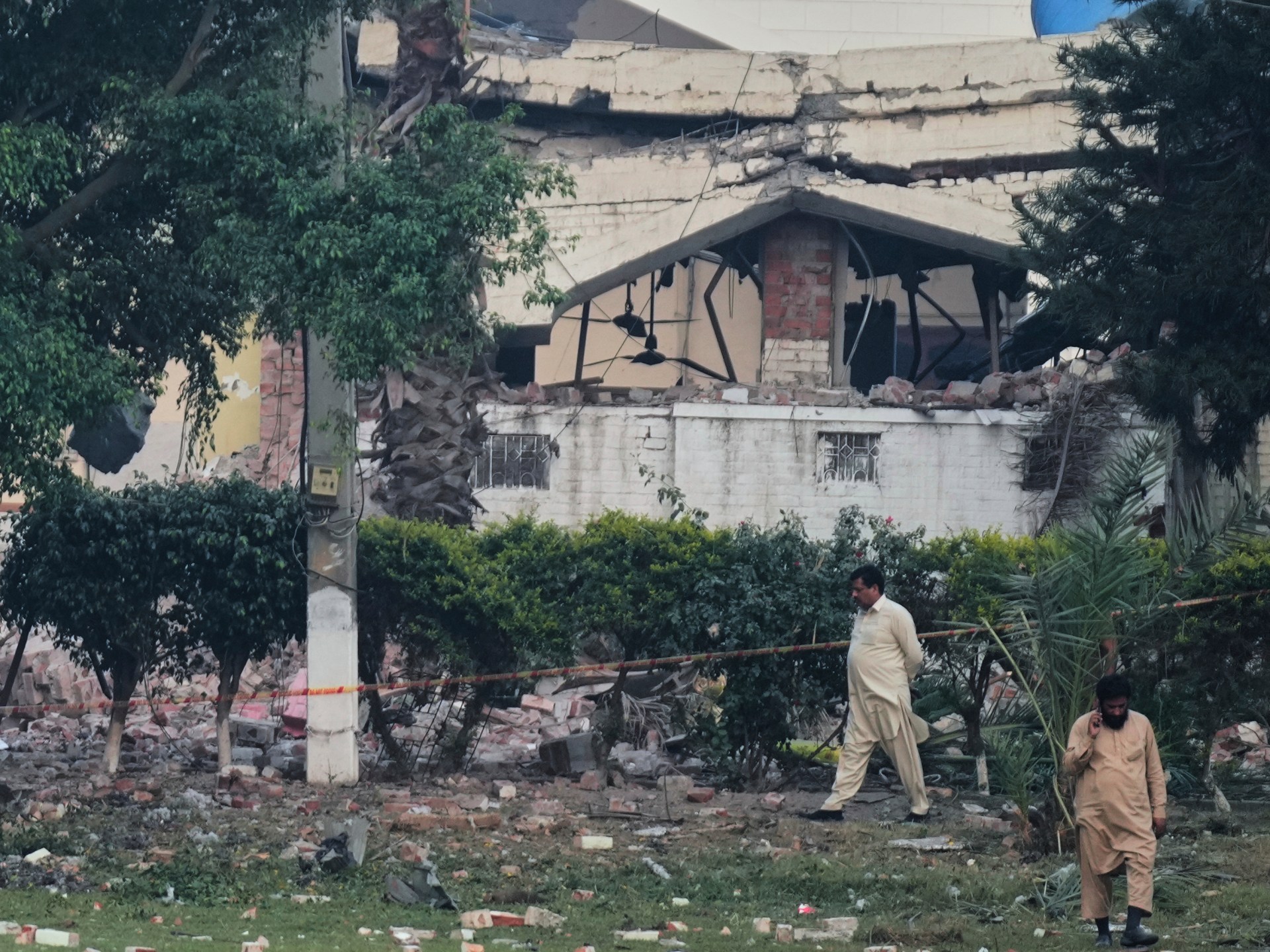
New Delhi, India – As Indian military officials took the podium next to the country’s foreign secretary at a media briefing on Wednesday morning, after unprecedented missile strikes into Pakistan and Pakistan-administered Kashmir, a timeline of death played out on a video screen behind them.
The 2001 attack on the Indian parliament in New Delhi in which nine people were killed. An assault on the Akshardham Temple in the western city of Ahmedabad in 2002, in which 33 people died. The 2008 Mumbai attacks in which more than 160 people were killed. Several other attacks. And finally, the killings in Pahalgam, Indian-administered Kashmir, in which gunmen shot down 26 people on April 22.
The May 7 missile strikes on Pakistan and Pakistan-administered Kashmir were payback, New Delhi has said, for Islamabad’s refusal to crack down on armed groups that India insists have been financed, trained and sheltered by its neighbours over the past four decades. Islamabad denies that charge – though it acknowledges that some of these groups are based in Pakistan.
But the missile strikes were about more than retribution, Indian Foreign Secretary Vikram Misri suggested on Wednesday. The strikes, he said, were driven by “a compulsion both to deter and to pre-empt” attacks by armed groups launched on Indian territory. Misri accused Pakistan of failing to take “demonstrable steps” against “terrorist infrastructure on its territory or territory under its control”.
Yet as tensions between the nuclear-armed neighbours escalate hour by hour, with Pakistan accusing India of launching a wave of drones into its territory on Thursday, military and geopolitical analysts question whether India’s approach serves as a deterrent against armed groups eager to target it. They argue that New Delhi’s actions are more symbolic and aimed at addressing its domestic audience rather than tactical advancement in the so-called “fight against terror”.
“This is all a domestic theatre,” said Ajai Sahni, executive director of South Asia Terrorism Portal (SATP), a platform that tracks and analyses armed attacks in South Asia. “The Indian strikes [in Pakistan] have no deterrent value.
“The aim of the strike has nothing to do with military takeaway – the aim [for Indian Prime Minister Narendra Modi] was to speak with his own domestic audience,” Sahni told Al Jazeera. “And [Pakistan’s pledge] of retaliation is to speak with the audience of the other side. That is the genius of it – that both sides will claim victory from this.”
‘Justice is served’
The Indian army and Foreign Secretary Misri argued on Wednesday that the country’s security forces had been precise and careful in the selection of their targets.
Among them was Muridke, next to Lahore, Pakistan’s second-most populous city, and what India described as the Markaz Taiba camp of the Lashkar-e-Taiba (LeT), the group behind the 2008 Mumbai attacks.
At the media briefing with Misri, Indian Army Colonel Sofiya Qureshi referred to the site as the place where key perpetrators of the Mumbai assault – including Ajmal Kasab, the sole gunman who was captured alive – were trained. More than 160 people died in the Mumbai attack.
India also hit Bahawalpur, which New Delhi claims hosts the headquarters of the Jaish-e-Muhammad, an armed group behind the 2019 suicide bombing attack in Kashmir in which more than 40 Indian paramilitary soldiers were killed.
“Justice is served,” the Indian army noted in a post on X as early reports of the missile strikes poured in on Wednesday, 15 days after the Pahalgam killings. The Indian missile strikes killed at least 31 people in Pakistan – all civilians, according to Islamabad – including two children. India has denied that it targeted civilians.
But Pakistan has threatened to hit back, and after Thursday’s drone attacks, the South Asian nations are even closer to a full-blown military conflict. Any hits taken by armed groups from Indian missiles won’t fundamentally change their ability to target India, said Sahni.
“All these strikes will result in are certain tactical and operational adaptations,” said Sahni.
‘A renewed armed movement’
That – an adapted strategy on the part of armed groups – is precisely what was on display on April 22, when gunmen attacked tourists in Pahalgam, say experts.
In February 2019, after the suicide attack on Indian troops, Indian warplanes pierced Pakistani airspace and bombed Balakot in Khyber Pakhtunkhwa, where New Delhi claimed it hit “terrorists’ camps”. As Pakistan scrambled jets in response, a dogfight ensued, and an Indian Air Force jet was shot down. Pakistan captured the Indian pilot before returning him 60 hours later.
Both nations claimed victory – the Modi government in New Delhi said it had entered Pakistan and bombed “terrorists”, while Pakistan highlighted its downing of an Indian jet and the capture of a pilot as evidence that it came out on top. And so neither side, say experts, felt the need to really change.
That’s why Sahni said he believes no matter how the current tit-for-tat threats and attacks play out, they won’t alter long-term calculations for any of the actors involved. Instead, “the tensions will resurface, perhaps in different forms.”
A Kashmiri political analyst – who has seen India-Pakistan wars in 1965, 1971, and 1999, and three decades of Kashmiri armed rebellion against Indian rule – agreed. “If it was supposed to work, then Kashmir would not be standing where we are today,” they said, requesting anonymity, fearing reprisal from Indian forces. “One of the world’s most volatile flashpoints.”
Six months after the Pulwama attack, New Delhi unilaterally revoked the disputed Kashmir region’s partial autonomy and broke down the erstwhile state into two federally governed territories in August 2019. China and Pakistan, India’s neighbours that both control parts of Kashmir, condemned the move.
India then imposed a clampdown in Kashmir and arrested dozens of political leaders, journalists, and human rights activists, even as the Modi government claimed the region was returning to “normalcy”. Despite that – and the hundreds of armed rebels killed by Indian security forces over the years, “the armed movement continues,” Sahni pointed out.
“The movement keeps on renewing itself [despite India’s countermeasures for three decades],” noted Sahni. “In the current attack, there has been a certain loss of material – buildings have been blown up – but if there is implicit support for these groups in Pakistan, they will always come back.”
‘A fiasco’
In the early hours of Wednesday, the Pakistani military claimed it had downed at least five Indian warplanes that had been involved in the missile strikes. Local Indian officials and security sources confirmed to Al Jazeera and other media outlets that at least two fighter jets had “crashed”, though Indian officials have not commented on the issue publicly.
If the jets indeed belonged to the Indian fleet, “it will become difficult for India to make a decision in the future about sending in aircraft to impose punitive strikes on Pakistan,” said Ajai Shukla, a defence and strategic affairs commentator, who served in the Indian Army from 1976 to 2001.
Shukla noted that while a planned and rehearsed strike would have deterrent value, “the realities eventually depend on how much loss has been inflicted, compared to losses incurred.
“It’s a moment where India needs to pause and think,” added Shukla. “Even when both countries claim victory, at least one of them in their heart of hearts knows that this was not a victory. This was something that turned out to be a fiasco.
“If there is going to be an attitude that we will not admit anything and we will declare victory, then probably that weakness will never be eradicated,” Shukla said.
To Sahni, there’s a more imminent danger that has arisen from the strikes over the past two days. Previously, he said, both sides acted within unspoken but accepted “calibrated limits”.
Not any more.
“There are no clear lines on what is ‘escalation’ now,” he said. “And that’s the classic slippery slope, on the edge of a risky spiral.”
Conflict Zones
Multiple explosions and sirens in Indian-administered Kashmir’s Jammu city | India-Pakistan Tensions News
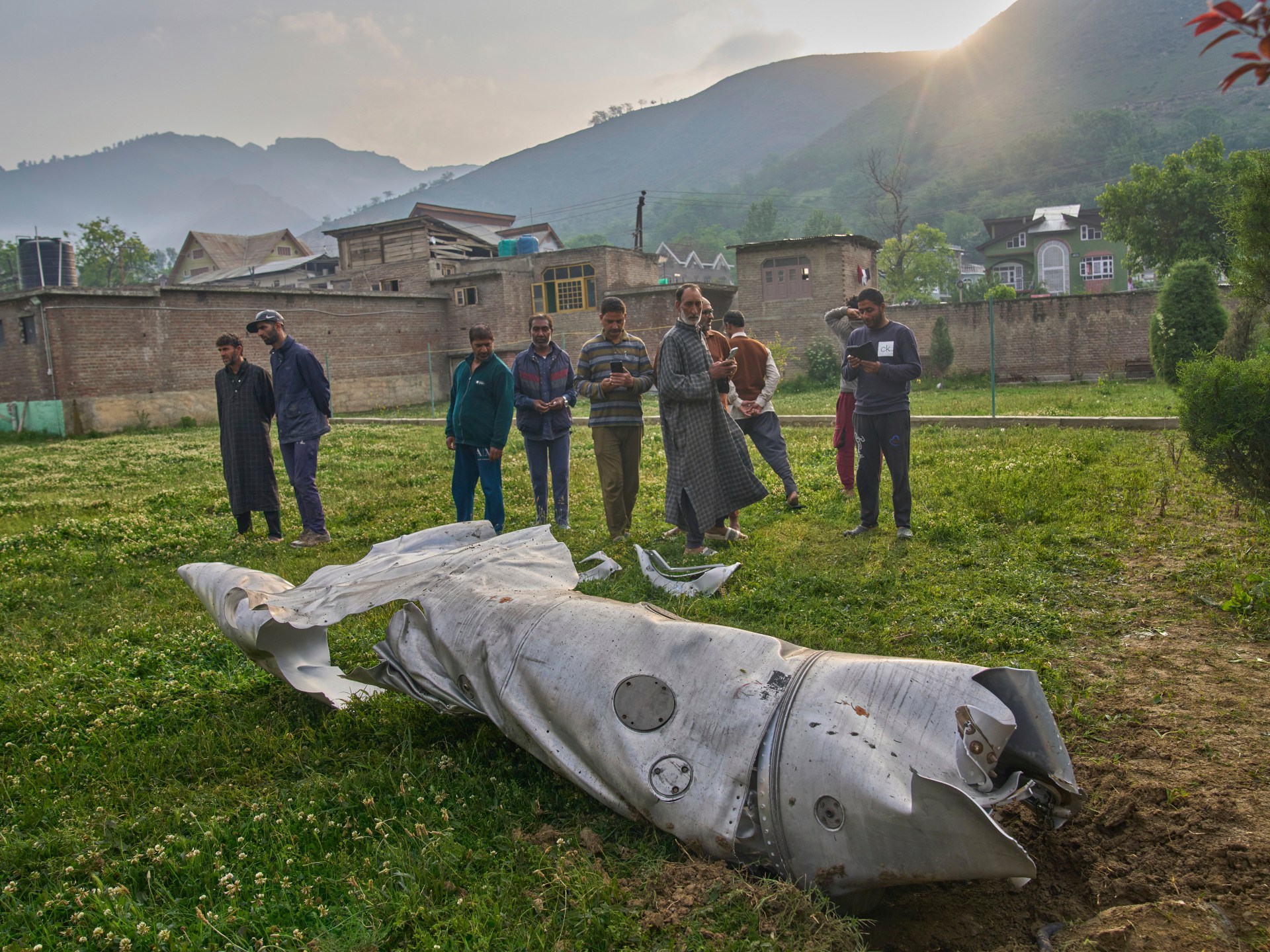
Residents in Indian-administered Kashmir have said there are major and multiple explosions and sirens in the city of Jammu, causing a complete blackout.
Local news channels reported suspected drones flying overhead in the city on Thursday.
Shesh Paul Vaid, the region’s former director-general of police and a resident of Jammu, said on social media: “Bombing, shelling, or missile strikes suspected.”
Indian and Pakistani authorities did not immediately comment.
Pakistan’s military says it shot down 29 drones from India that entered its airspace, as hostilities between the nuclear-armed neighbours continue to spiral following Indian air raids on multiple locations within Pakistan’s territory.
Pakistani Lieutenant General Ahmed Sharif Chaudhry, the military spokesperson, said on Thursday that Indian-made Israeli Harop drones had been deployed to targets including Karachi and Lahore.
“Indian drones continue to be sent into Pakistan airspace … [India] will continue to pay dearly for this naked aggression,” Chaudhry said. The military said one civilian was killed and four Pakistani soldiers were wounded as a result of the drone incidents.
Pakistan’s Foreign Minister Ishaq Dar has said his country has so far “exercised strategic restraint” and limited its response strictly for self-defence in accordance with international law and the United Nations Charter. “Pakistan deserves to respond to India at a place, time and manner of its choosing,” he said.
Earlier on Thursday, his Indian counterpart, Foreign Secretary Vikram Misri, said that any further military action by Pakistan will be considered an “escalation”, adding that Islamabad will be considered responsible for any attack on Indian infrastructure. India said that Pakistan had attempted to engage military targets with missiles and drones, but that the Indian military had thwarted the attacks.
The Indian Army said it “neutralised” attempts by Pakistan to “engage” several military targets in its northern and western regions on Wednesday night and early Thursday. It targeted air defence systems in several locations in Pakistan, India’s Ministry of Defence said in a statement, adding that 16 people were reported killed as a result of Pakistani fire.
Pakistan said India’s attacks killed at least 31 civilians on Wednesday.
Pakistani Defence Minister Khawaja Asif told the Reuters news agency that no military sites or the air defence system in the country’s second-largest city of Lahore sustained any damage from Indian drones. India said its army struck and damaged air defence radars and systems at multiple locations in Pakistan.
Thursday’s exchanges and back-and-forth claims and counterclaims came a day after India said it launched precision strikes on what it called “terrorist infrastructure” inside Pakistan. Indian Defence Minister Rajnath Singh told an all-party meeting on Thursday that “100 terrorists” had been killed; the claim could not be independently verified.
The crisis between India and Pakistan appears to be “at a crossroads,” Washington-based South Asia analyst Michael Kugelman told Al Jazeera.
“India has said it has no intention of further military action, unless it is attacked by Pakistan. For now, Pakistan has vowed retaliation for the initial Indian air strikes, but it has also said it wants de-escalation,” he said.
New Delhi’s operation followed a deadly attack in Indian-administered Kashmir two weeks ago, which killed 26 people. India blamed Islamabad for the attack – a charge Pakistan strongly denies.

Escalation on the ground
Indian Prime Minister Narendra Modi chaired a high-level meeting on Thursday in which he reaffirmed his government’s commitment to “national security, operational preparedness, and citizen safety”, his office said.
“Ministries are ready to deal with all kinds of emerging situations,” the statement said.
Reporting from New Delhi, Al Jazeera’s Neha Poonia described the situation along the Line of Control (LoC) – the de facto border in Kashmir – as deteriorating rapidly. “There’s been a significant escalation in the manner in which the two armies are engaging,” she said.
The Indian Army said 13 civilians had been killed, 59 injured, and one soldier had also died in the exchanges. Villages near the LoC have emptied, with residents fleeing or sheltering in bunkers.
“We haven’t seen this kind of civilian movement in years,” Poonia noted.
Amid the security crisis, 20 airports across northern India have been closed until at least May 10, severely affecting travel and commercial activity.
Meanwhile, Pakistan’s Civil Aviation Authority said Karachi airport will be closed until 6pm (13:00 GMT), while the airports at Islamabad and Lahore were briefly shut “for operational reasons”.
‘Act of war’
From Islamabad, Al Jazeera’s Kamal Hyder reported that the Pakistani military has accused India of endangering civilian and aviation safety with repeated airspace violations.
Hyder also noted a new point of contention: India’s release of water into the Chenab River. Islamabad sees this as a breach of longstanding agreements, an “existential threat” and “an act of war”.
“Pakistan’s parliament, with cross-party consensus, has now authorised a military response,” Hyder said, pointing to mounting fears of a wider war.
After Wednesday’s strikes, Pakistani Prime Minister Shehbaz Sharif promised to retaliate, raising fears that the two countries could be headed towards another all-out conflict.
But in a sign that India and Pakistan may be looking to temper the escalation, Pakistan’s FM Dar told the Reuters news agency on Thursday that there has been contact between the offices of the national security advisers of Islamabad and New Delhi.
At the same time, Saudi Arabia and Iran have sent their foreign ministers to New Delhi and Islamabad in a bid to mediate.
‘Pakistan will respond’
As India and Pakistan both accuse each other of provocation, analysts suggest Pakistan is under pressure to deliver a strong response to India’s actions.
“India’s limited objectives are met,” said Happymon Jacob, director of the Council for Strategic and Defence Research in New Delhi, speaking to Al Jazeera. “Pakistan has a limited objective of ensuring that it carries out a retaliatory strike to save face domestically and internationally. So, that is likely to happen.”
Jacob predicted the exchange may evolve into a few rounds of cross-border missile or artillery fire, similar to past confrontations.
Security analyst Hassan Khan told Al Jazeera that the Pakistani government and military are under pressure to respond decisively.
“Pakistan will respond and the people expect that response to be harder than what the Indians have done,” he said from Islamabad. Khan predicted Pakistan could target multiple Indian installations using missiles while avoiding crossing the LoC.
-

 Asia2 days ago
Asia2 days agoIndia launches military operation against Pakistan in major escalation
-

 Europe2 days ago
Europe2 days agoTrump’s Oval Office meeting with Carney didn’t reach Zelensky-level tension. But it wasn’t all neighborliness
-

 Middle East2 days ago
Middle East2 days agoPalestine and the decline of the US empire | Israel-Palestine conflict
-

 Middle East2 days ago
Middle East2 days agoTrump says bombing of Yemen to stop as Oman confirms US-Houthi ceasefire | Israel-Palestine conflict News
-
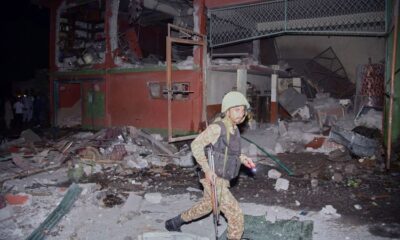
 Asia2 days ago
Asia2 days ago‘Operation Sindoor:’ Why India attacked Pakistan and conflict has escalated dramatically
-
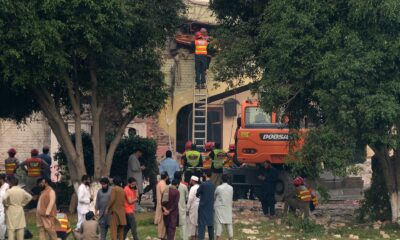
 Conflict Zones1 day ago
Conflict Zones1 day agoHow world leaders are reacting to India-Pakistan military strikes | Border Disputes News
-

 Lifestyle2 days ago
Lifestyle2 days agoThe Met Gala is over, but dandyism isn’t. Here’s how to dress like a dandy in everyday life
-
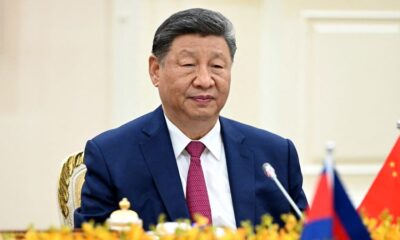
 Europe2 days ago
Europe2 days agoXi Jinping set to arrive in Moscow as Putin’s ‘guest of honor’ ahead of Victory Day military parade




